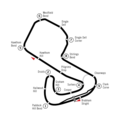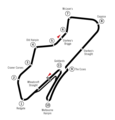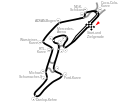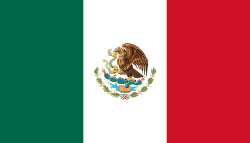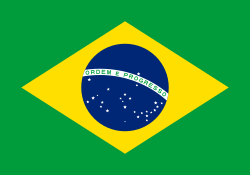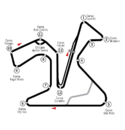Europas Grand Prix
| Baku City Circuit | |
 | |
| Generelle informationer | |
| Antal løb | 23 |
| Første gang | 1983 |
| Sidste gang | 2016 |
| Flest sejre (kører) | |
| Flest sejre (konstruktør) | |
| Banelængde | 6,003 km (3,73 mi) |
| Løbslængde | 306,049 km (190,170 mi) |
| Runder | 51 |
| Seneste løb (2016) | |
| Pole position | |
| |
| Podium | |
| |
| Hurtigste omgang | |
| |
Europas Grand Prix var et Formel 1-løb som første gang blev arrangeret på Brands Hatch-banen i 1983. Siden den gang er det blevet arrangeret på en række forskellige baner, i en række forskellige lande i Europa. Fra 2008 til 2012 var Europas Grand Prix kørt på gadebanen i Valencia i Spanien. I 2016-sæsonen blev løbet kørt på gadebanen Baku City Circuit i Baku i Aserbajdsjan, men vil fra 2017 blive kørt som Aserbajdsjans Grand Prix.
Vindere af Europas Grand Prix
Baner
- Brands Hatch
- Donington Park
- Circuito de Jerez
- Nürburgring
- Valencia Street Circuit
- Baku City Circuit
Eksterne henvisninger
Medier brugt på denne side
Finlands flag
Flag of Canada introduced in 1965, using Pantone colors. This design replaced the Canadian Red Ensign design.
The Flag of Europe is the flag and emblem of the European Union (EU) and Council of Europe (CoE). It consists of a circle of 12 golden (yellow) stars on a blue background. It was created in 1955 by the CoE and adopted by the EU, then the European Communities, in the 1980s.
The CoE and EU are distinct in membership and nature. The CoE is a 47-member international organisation dealing with human rights and rule of law, while the EU is a quasi-federal union of 27 states focused on economic integration and political cooperation. Today, the flag is mostly associated with the latter.
It was the intention of the CoE that the flag should come to represent Europe as a whole, and since its adoption the membership of the CoE covers nearly the entire continent. This is why the EU adopted the same flag. The flag has been used to represent Europe in sporting events and as a pro-democracy banner outside the Union.Forfatter/Opretter: HumanBodyPiloter5, Licens: CC0
A map of the Formula One motor circuit in Baku as it was used for the 2016 European Grand Prix and the 2017, 2018, 2019, and 2021 Azerbaijani Grands Prix. This map is valid for races which use this layout and corner numbering scheme, please upload a new file for races which use different layouts or corner numbering schemes rather than replacing this file. As this is a free-hand map drawn by an enthusiast rather than a professional cartographer's work it may contain some errors, although checking it against other maps it appears accurate enough for most purposes. The track is shown in black with a grey outline, while the pit lane is shown in blue. A scale showing the length of one kilometre (with increments of 100 metres) is given, to allow viewers to contextualise and understand what they are looking at. Corner numbers and other important text is given an off-white background to avoid transparency issues rendering it illegible on certain devices. A line with a chequered flag pattern crossing the track and pit lane shows the location of the start/finish line also known as the control or timing line; while the location of pole position is indicated by a white line, crossing only the track, marked with a large mauve arrow, which indicates the direction of travel. The salmon arrow marked "N" shows the direction of north.
Valencia Street Circuit map.
Forfatter/Opretter: Pitlane02, Licens: CC BY-SA 3.0
Nürburgring, layout from 2002, the Grand-Prix-Track
